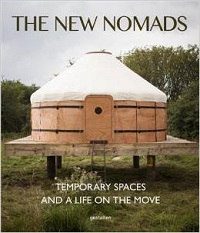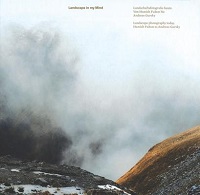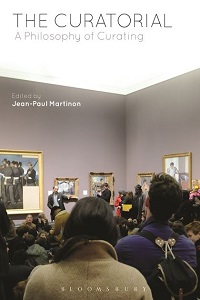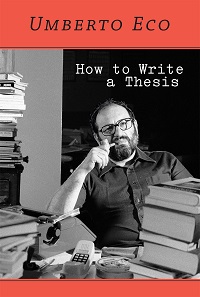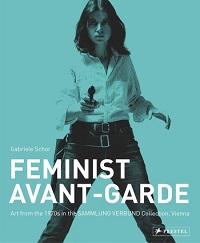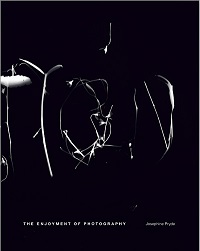Click on the image for more information, and to purchase
Architecture
The retro-futuristic epoch is one of the most visually spectacular in architecture's history. The utopian buildings of the 1960s and 1970s never go out of style. This book compiles radical ideas and visionary structures. The notion of utopia proves as diverse as it does universal. From exuberant master plans to singular architectural expressions, the rise of the utopian architectural movement in the 1960s and 1970s represents a critical shift in ideology away from mid-century traditionalism. This period shakes off the conformity and conventions of the 1950s in favour of a more experimental post-war agenda. Marked by ground-breaking reinterpretations of both the single family house as well as more large scale developments, the embrace of utopian and generally progressive thinking mirrored the cultural revolution of the times. These daring, charming, futuristic, and hopeful designs were not isolated to a particular part of the world. Visionary voices longing for a fresh approach to architecture began appearing across France, Japan, the United States, and beyond.
The life of urban nomads places new demands on cities, buildings, residences, and working spaces. This book presents temporary architecture, flexible room and furniture concepts, and the fitting tools for a generation that feels at home in every corner of the globe. Today’s internet generation no longer needs a home. It is mobile. It works six months in a shared office in Berlin, spends the summer in a caravan in Chile, and shows up just in time for the next project at a temporary desk for a client in New York. Growing up with the internet and digital tools means living and working differently. Aside from a functioning wireless connection and good coffee, web developers, designers, musicians, journalists, and other creative entrepreneurs need, above all, inspiration, new ideas, contacts, and international exchange. So they travel from one co-working space to the next, alternating countries and continents, as well as accommodation, friends, and cultures. The New Nomads documents this trend, in particular showing the architecture, interior design, modular furniture, and multi-functional tools that this nomadic generation has developed for its own specific needs. Divided office floors with flexible uses, temporary living and working spaces that move with the nomads, multi-functional objects that are at once chair and storage space, table and bed, or cupboard and desk are all featured in the book. The necessary infrastructure is not hidden away but becomes the distinguishing design feature. Compactness and functionality meet a high standard for aesthetics, sustainability, and material.
Photography
Landscape in my Mind is a pictorial journey through the landscapes of current art photography. The exhibition covers the whole gamut of current positions in international landscape photography from Hamish Fulton to Andreas Gursky. Always a network of connections between man and nature landscape presents itself as a mental projection level of the perception of our surroundings – both close and distant. The works of art function as 'distorted' mirrors of perceived reality; they are not pure documentations produced at the click of a camera but hybrid tableaus between fiction and abstraction, metaphors of the view of the world and beyond. Typically, the photographs are 'pictures painted with the camera' in large format, which exude the self-confidence of New Photography. Blurring effects and compositional qualities enhance the tableau’s painterly and pictorial value. Consequently, artists such as Elger Esser or Jörg Sasse, for example, see themselves more as 'picture composers' rather than photographers. Rather than the objective perception of landscape as found in say Thomas Struth, these images elicit emotions in the observer, including feelings of being overwhelmed, melancholy, disquiet and dread.
Theory
What is the function of style today? If the 1970s were defined by Stop curating! And think what curating is all about. This book starts from this simple premise: thinking the activity of curating. To do that, it distinguishes between 'curating' and 'the curatorial'. If 'curating' is a gamut of professional practices for setting up exhibitions, then 'the curatorial' explores what takes place on the stage set up, both intentionally and unintentionally, by the curator. It therefore refers not to the staging of an event, but to the event of knowledge itself. In order to start thinking about curating, this book takes a new approach to the topic. Instead of relying on conventional art historical narratives (for example, identifying the moments when artistic and curatorial practices merged or when the global curator-author was first identified), this book puts forward a multiplicity of perspectives that go from the anecdotal to the theoretical and from the personal to the philosophical. These perspectives allow for a fresh reflection on curating, one in which, suddenly, curating becomes an activity that implicates us all (artists, curators, and viewers), not just as passive recipients, but as active members. As such, The Curatorial is a book without compromise: it asks us to think again, fight against sweeping art historical generalizations, the sedimentation of ideas and the draw of the sound bite. Curating will not stop, but at least with this book it can begin to allow itself to be challenged by some of the most complex and ethics-driven thought of our times.
By the time Umberto Eco published his best-selling novel The Name of the Rose, he was one of Italy’s most celebrated intellectuals, a distinguished academic and the author of influential works on semiotics. Some years before that, in 1977, Eco published a little book for his students, How to Write a Thesis, in which he offered useful advice on all the steps involved in researching and writing a thesis—from choosing a topic to organizing a work schedule to writing the final draft. Now in its twenty-third edition in Italy and translated into seventeen languages, How to Write a Thesis has become a classic. Remarkably, this is its first, long overdue publication in English. Eco’s approach is anything but dry and academic. He not only offers practical advice but also considers larger questions about the value of the thesis-writing exercise. How to Write a Thesis is unlike any other writing manual. It reads like a novel. It is opinionated. It is frequently irreverent, sometimes polemical, and often hilarious. Eco advises students how to avoid “thesis neurosis” and he answers the important question “Must You Read Books?” He reminds students “You are not Proust” and “Write everything that comes into your head, but only in the first draft.” Of course, there was no Internet in 1977, but Eco’s index card research system offers important lessons about critical thinking and information curating for students of today who may be burdened by Big Data.
The Feminist Avant-Garde of the 1970s documents a tectonic change in the way women portray themselves in art. Historically, women were depicted as a projection of male fantasies, prejudices, and relationships. However in the 1970s, for the first time, female artists began collectively to investigate visual representations of their own selves. They studied their own bodies and created the prospect of determined feminine identities. Editor Gabriele Schor explores the Feminist Avant-Garde to emphasize the role that these artists played for the last four decades. The works are provocative, radical, poetic, ironic, angry, cynical and heartfelt. The artists shared a collective consciousness that reassessed, and even rejected, what came before, turning to new ways of expression in the fields of photography, performance, film, and video. The collection SAMMLUNG VERBUND founded in 2004 in Vienna focuses on the feminist art movement of the 1970s as one of the main areas and is with 500 works the largest collection with this emphasis. Included are works by Eleanor Antin, Cindy Sherman, Ana Mendieta, Nil Yalter, Ketty La Rocca, Birgit Jürgenssen, Renate Bertlmann, Francesca Woodman and others. This important book emphasizes the accomplishments of women artists who have made a name for themselves while encouraging the young generation.
Art
The Enjoyment of Photography presents a broad selection of Josephine Pryde's work from 1990 to 2014. In photographic works that encompass the full range of the medium's historical and current genres, styles, and techniques, but also through sculpture and writing, the Berlin- and London-based artist (*1967) offers incisive, often ironic, and provocative commentary on the values, hierarchies, and economies subtending the field of contemporary art against the backdrop of larger societal shifts. Estranging the familiar or conversely expressing the common in a radically unforeseen manner, Pryde's ingenuous choice of subject matter, unusual formal solutions and surprising juxtapositions continue to capture international exhibition audiences. Prefaced by art historian André Rottmann, the volume features new essays by scholar Rhea Anastas and artist/critic Melanie Gilligan that insightfully survey Pryde's work over the last two decades, providing in-depth discussions of the artist's continuous engagements with photographic imagery, visual culture, social and artistic conventions, as well as political issues associated with feminism (among other concerns). An illustrated exhibition chronology and detailed bibliography provides further information on the artist's career.
_______________


